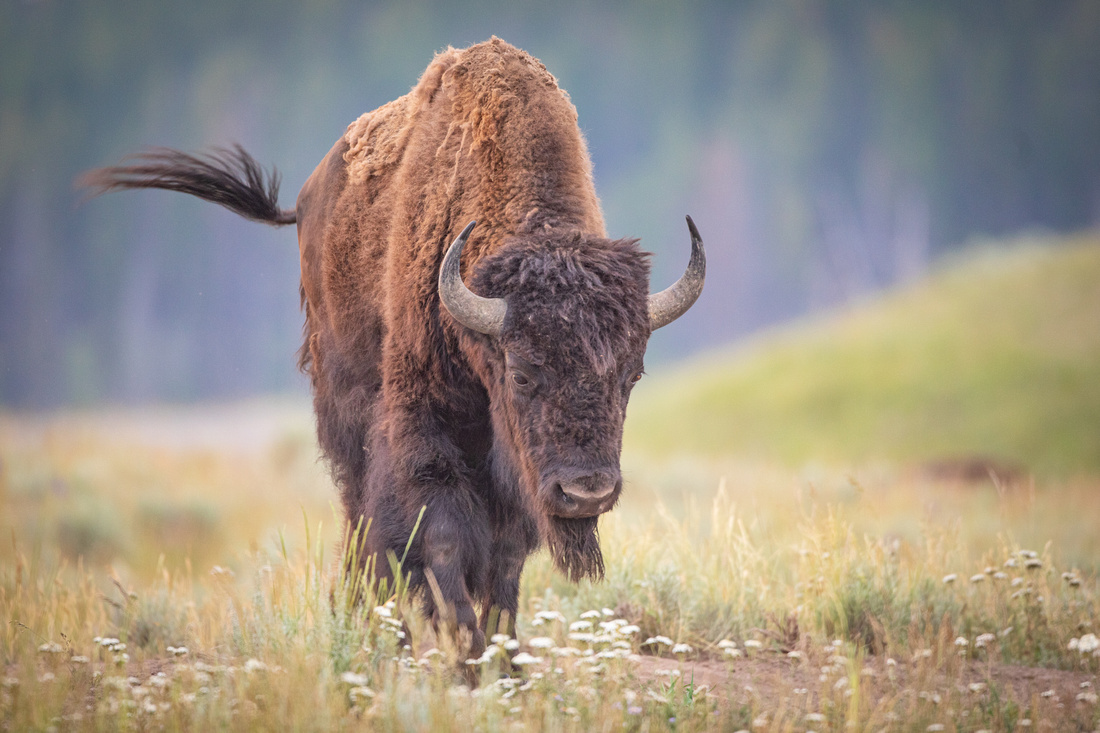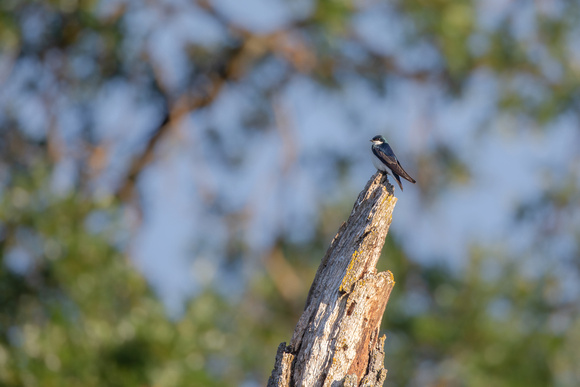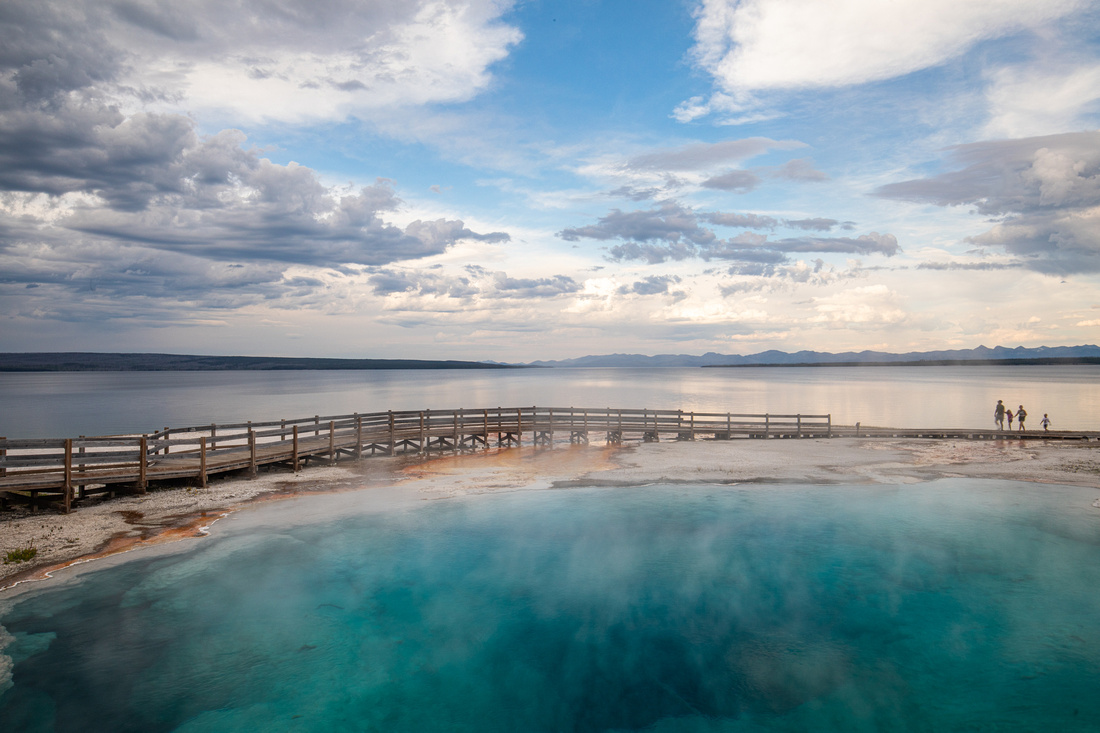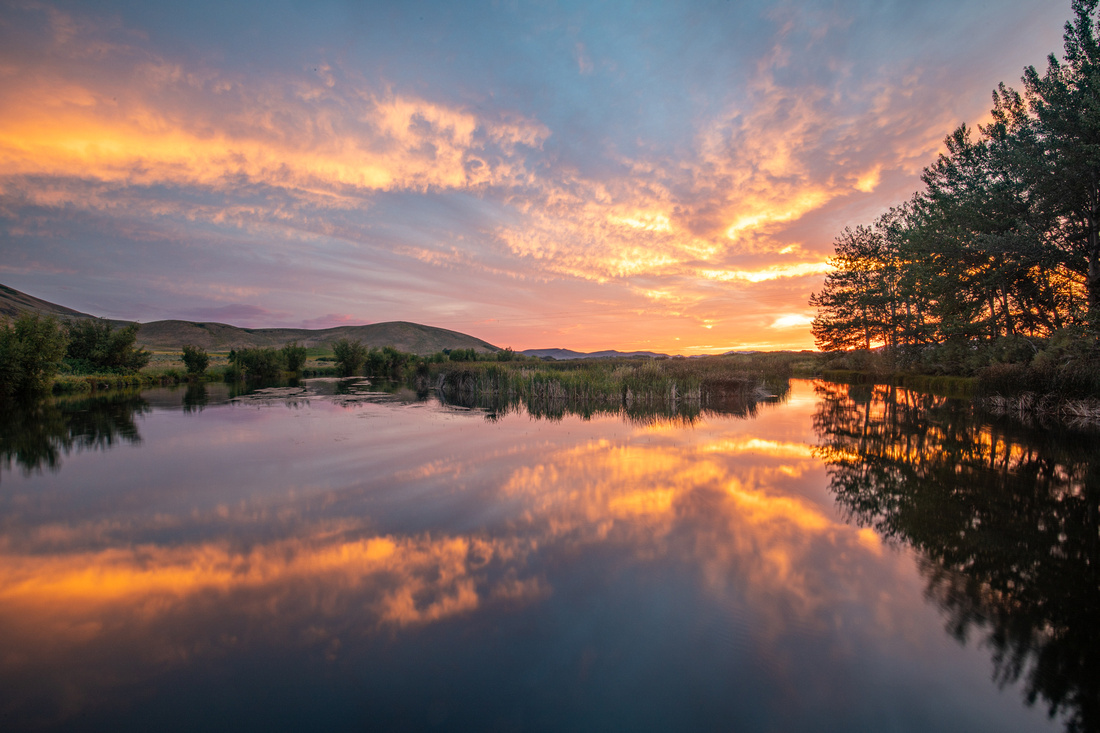Camera lenses: to zoom or prime
Camera lenses: to zoom or prime?
Text and photos by Heather Cline
 American Bison American Bison
American Bison, Yellowstone National Park |
Photography offers a mind blowing array of tools to hone your skills and create stellar images. Lens choice is no exception. You can but everything from 8 mm, which is a view distorting fish-eye lens, all the way up to 1600 mm which is a super telephoto lens.
The focal length(s) you choose will depend on several factors, starting with the type of photography you are interested in. Landscape photography? Wide angle, around 24 mm. Portraits? 85 mm. Wildlife? 400 mm and up!
The other decision that every photographer faces is zoom or prime?
What is a zoom lens?
A zoom lens has a variable focal length that you can adjust depending on what the scene demands. This lens allows you to make subjects appear smaller or larger in the frame by adjusting the focal length. Zoom lenses come in a variety of focal lengths and zoom ranges. For example, you can get a 16-35 mm zoom lens that satisfies varying degrees of wide angle lengths, great for landscape photography. You can also get a 420-800 mm telephoto zoom lens that will help you get close to all kinds of wildlife - everything from elephants to egrets. You can even get a zoom lens that saddles the two, such as a 28-300 mm.
One thing to pay attention to when selecting a zoom lens is the maximum aperture it can support at each spectrum of the focal length. For example, you may see a 75-300 mm zoom lens advertised with a aperture range of f/4-5.6. This means that at 75 mm, the maximum aperture is f/4 but when it is zoomed in to 300 mm, it is f/5.6. If having the largest possible aperture is important to you, this detail becomes very important when selecting that zoom lens. If you have ever wondered why two zoom lenses with the same focal range vary so much in price, take a look at the aperture range. Wider apertures (represented by smaller numbers) that allow in more light, cost more money. Al the reasons that contribute to this is a blog for another day!
 Tree Swallow Tree Swallow
 Tree Swallow Tree Swallow
Tree Swallow, Effie Yeaw Nature Preserve |
What is a prime lens?
A prime lens has a fixed focal length, so unless you move the field of view cannot be changed. Like telephoto lenses, prime lenses come in a variety of focal lengths. One of the most popular fixed focal length lenses purchased today is the 50 mm because it produces images that most closely approximate what we see with our own eyes. It's small, affordable, and easy to use.
In general, prime lenses are sharper than zoom lenses because zoom lenses have additional glass inside that allows the focal length to be adjusted and this causes some diffraction which impacts the image details. Modern day zoom lenses are quite excellent so unless you are planning to create large scale prints, you may not notice this as much.
 West Thumb Geyser, Yellowstone National Park West Thumb Geyser, Yellowstone National Park
West Thumb Geyser, Yellowstone National Park |
A Comparison
Let's looks at the benefits each type of lens offers.
Benefits |
|
Prime |
Cost: Assuming the aperture is equal at the widest focal length to a zoom lens, the cost of a prime lens is significantly less expensive than a zoom. Example: Canon 24 mm prime lens with a f/2.8 aperture sells for about $440 while a Canon 24-70 mm zoom lens with the same aperture sells for about $2,000. Size: The physical size of a prime lens is smaller than its counterpart, which means it is more compact for travel and allows you to keep a lower profile. Example: Canon 24 mm prime lens is 2.69 x 2.19 inches while a Canon 24-70 mm zoom lens is 3.5 x 4.4 inches. Weight: A prime lens is lighter than its counterpart so you can enjoy a lighter load or cram more gear in your camera bag - it's up to you! Example: Canon 24 mm prime lens is 9.9 ounces while a Canon 24-70 mm zoom lens is about triple the weight at 28.4 ounces. Discipline: Since prime lenses have a fixed focal length, you must move in, out, and around the scene to adjust what objects are included in the frame and the size of those objects. Having this limitation can also make you a more creative photographer because you are forced to find a suitable composition with the focal length available to you. |
Zoom |
Versatility: The ability to adjust the focal length of the lens to meet the compositional needs provides you more opportunity to get those images that you might not otherwise be able to capture. For example, you may not be able to physically (and safely) step into the grand canyon to limit what you want to include in the photo - or - you may not want to walk up to a bear to have his face fill the frame. Weight/Size: Reduced weight and size is listed as a benefit of prime lenses but if you must purchase more than one focal length to meet your needs, a zoom can actually save you space and weight. For example: If you are nature photographer who likes to shoot everything from wide open landscapes, to macro subjects, to quick moving birds, you would need at least 3 lenses to meet a basic need - while a zoom lens could allow you to photograph all of this with one lens. |
 Sunset on Silver Creek Preserve Sunset on Silver Creek Preserve
Sunset on Silver Creek Preserve |
Conclusion
I have been practicing the art of photography for decades and have accumulated a few lenses along the way, all purchased with a specific goal in mind. I currently have 5 zooms and 3 primes. If I had to choose a favorite between the two, my favorite would be my prime lenses for their sharpness and quality - oh but the zooms provide versatility that cannot be beat too. It's a tough choice but thankfully, lens manufacturers have graciously allowed us the opportunity to buy pretty much anything that suits our fancy and that our pocket books (and spouses) will allow!